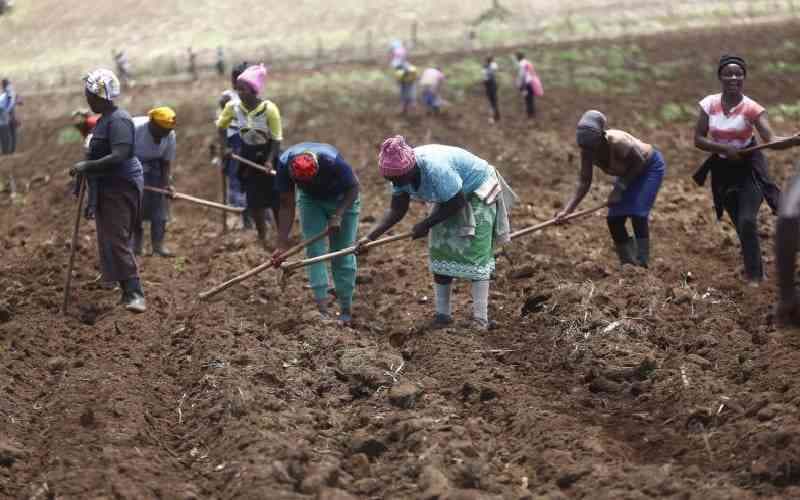We're loading the full news article for you. This includes the article content, images, author information, and related articles.
With over 30% of Kenya's agricultural land degraded and 63% of arable land now acidic, experts warn of a deepening food insecurity crisis and call for urgent nationwide adoption of soil restoration practices.

NAIROBI, KENYA - Kenya is facing a silent crisis that threatens the foundation of its economy and the food security of millions. Widespread soil degradation, driven by decades of unsustainable farming practices, deforestation, and the impacts of climate change, is crippling agricultural productivity and pushing vulnerable communities deeper into poverty. According to the World Resource Institute, more than 30% of Kenya's agricultural land is degraded, a figure corroborated by the Food and Agriculture Organization (FAO), which reports that over a third of the nation's soils suffer from erosion and nutrient depletion.
This environmental challenge has severe economic consequences. The annual cost of land degradation in Kenya is estimated at USD 1.5 billion, equivalent to 5% of the country's GDP, according to a United Nations Convention to Combat Desertification (UNCCD) report. Research published by ResearchGate indicates that between 2001 and 2009, the economic toll of land degradation from land use changes alone reached approximately USD 1.3 billion annually. For a nation where agriculture contributes to roughly 33% of the Gross Domestic Product (GDP) and employs over 40% of the population, these figures are alarming.
A primary driver of this degradation is soil acidity. Kenya's Ministry of Agriculture has found that approximately 63% of the country's arable land is now acidic. This condition, often exacerbated by the long-term use of nitrogen-based chemical fertilizers, severely hampers crop growth by limiting the availability of essential nutrients to plants. Farmers are then caught in a vicious cycle: as yields decline, they apply more synthetic fertilizers, which can further increase soil acidity and kill off the beneficial microbial life essential for a healthy soil ecosystem. This has led to significant drops in the production of staple crops, with maize yields, for example, falling by 20% over the last decade, contributing to a 40% rise in flour prices. In 2022 alone, the FAO reported a 4% decline in maize production.
The consequences extend beyond crop failure. Degraded soils are less able to retain water, making farms more susceptible to the increasingly erratic weather patterns caused by climate change, such as prolonged droughts and intense flooding. Water-induced erosion is a major concern, with Kenyan croplands losing an average of 26 tons of topsoil per hectare annually, and in some areas, this loss exceeds a staggering 90 tons.
Despite the grim outlook, there is a growing movement among farmers, government agencies, and non-governmental organizations to restore soil fertility through sustainable and regenerative agricultural practices. Experts are advocating for a shift away from over-reliance on chemical inputs towards methods that rebuild soil health from the ground up.
Key recommended practices include:
The Kenyan government, in partnership with organizations like the Kenya Agricultural and Livestock Research Organization (KALRO), has acknowledged the crisis. Initiatives are underway to promote soil health management, including farmer training on sustainable practices and better access to soil testing services. In March 2025, the government signaled a move towards supporting organic fertilizers to help heal the nation's soils. However, experts emphasize that a collective, nationwide effort is required to scale up these solutions. The investment case is strong; the UNCCD estimates that every dollar invested in restoring degraded land can yield four dollars in returns.
Restoring Kenya's soil fertility is not merely an environmental issue; it is a critical component of the nation's economic stability and food sovereignty. As the country prepares for future planting seasons, the focus must be on empowering farmers with the knowledge and resources to transition to sustainable practices that can revive the land, ensure bountiful harvests, and secure a healthier future for generations to come.
Keep the conversation in one place—threads here stay linked to the story and in the forums.
Other hot threads
E-sports and Gaming Community in Kenya
Active 7 months ago
Popular Recreational Activities Across Counties
Active 7 months ago
The Role of Technology in Modern Agriculture (AgriTech)
Active 7 months ago
Investing in Youth Sports Development Programs
Active 7 months ago